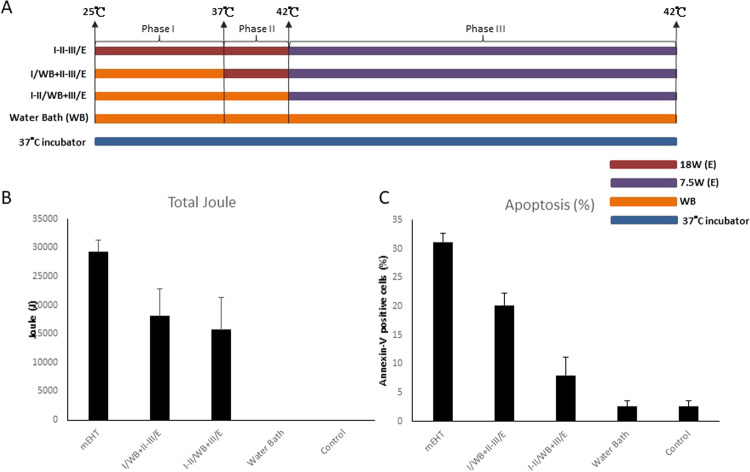Figure 1.
Evaluation of Temperature Increase Phase. (A) The heating protocol has three phases and a set of variation, fulfilled with three variant of energy-absorption (1) electric (mEHT), water-bath (WB, max.42 °C), (3) incubator (constant 37 °C). The incubator had fixed temperature the WB was controlled. Hyperthermia treatment was divided into three phases to evaluate the impact of electrical energy on apoptosis: Phase I) Escalation from room temperature to 37 °C in span of 10 minutes. Phase II) Escalation from 37 °C to 42 °C in span of 5 minutes. Phase III) Maintenance of 42 °C for 30 minutes. I/WB + II-III/E: Phase I was heated by WB and Phase II and III were heated by mEHT. I-II/WB + III/E: Phase I and II were heated by WB and Phase III was heated by mEHT. (B) The absorbed energy was measured only in case of electric energy transfer. Power of mEHT was setting as Phase I, II-18W and Phase III-7.5 W. Power output was recorded per second and calculated as average power per second. Total number of corresponding Joules emitted per each experiment was recorded and showed as bar chart. (C) Apoptosis was measured using flow cytometry after staining with FITC-conjugated Annexin V and propidium iodide. Positively stained cells were counted using FACSCalibur. Histograms for the percentage of Annexin-V-positive cells are shown. Data represent results from 3 independent experiments; bars indicate mean ± standard deviation (SD). (*P < 0.05).

